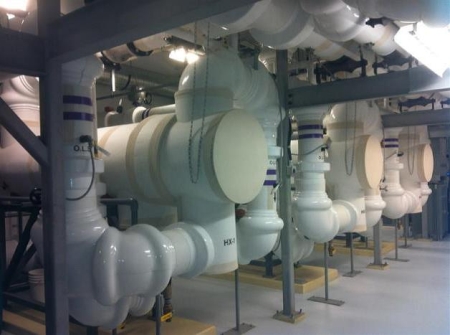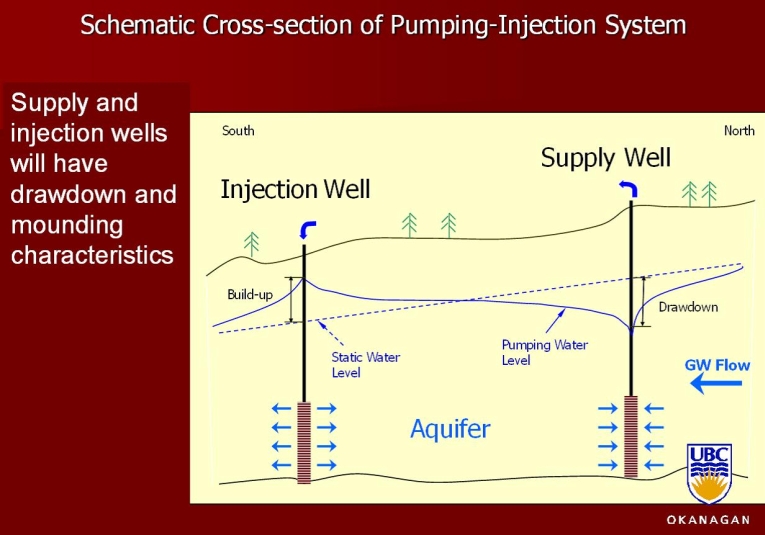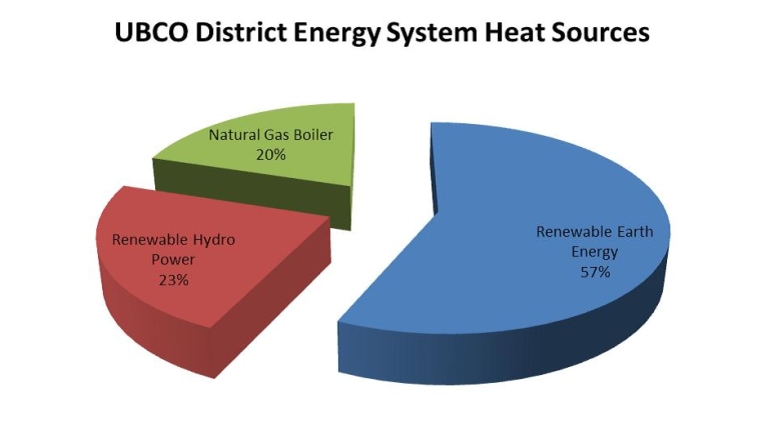District Energy System
System Operation
The DES pumps water at ambient temperature (8.9C to 23.9C) around the campus to 11 academic buildings. This is what we call the DES energy loop. Each building has its own energy loop supply to heat pumps which produce hot and cold water to heat or cool the building. Often a building is balanced, meaning that its energy loop water supply is operating within the temperature parameters that allow the heat pumps to produce hot or cold water. In the winter a building may require more heating than cooling. In this case it will open a two way valve and take heat energy from the main DES energy loop.

If the DES loop is operating within its temperature limits the loop is balanced.

If more of the buildings are calling for heating than those requiring cooling, then the temperature of the DES energy loop will go down. If it goes down below the minimum temperature limit then we have to add heat to the loop. This can be done by diverting the DES water through one of the heat exchangers located in the geoexchange building.

On the other side of the heat exchanger is the geothermal water. This water is a constant temperature of between 10C and 12C all year round.
The difference in temperature of the return water from the DES (maybe 5C), and the geothermal water, allows us to extract heat from the geothermal water.


Diverting the DES water through a high efficiency condensing boiler to raise the temperature creates an additional source of heat.
If more of the buildings are calling for cooling than heating, then we need to cool the DES loop water. Again, the first stage of cooling is to use the geothermal water via the heat exchangers. The second stage is to divert the DES water through two 400 ton evaporative fluid coolers.


If more of the buildings are calling for cooling than heating, then we need to cool the DES loop water. Again, the first stage of cooling is to use the geothermal water via the heat exchangers. The second stage is to divert the DES water through two 400 ton evaporative fluid coolers.